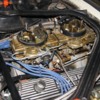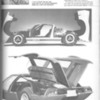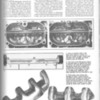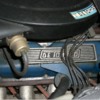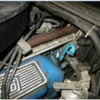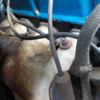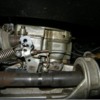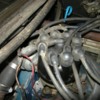The reason I post this is because it is the same basic engine as in the 'goose, a '68 302 4v.
It uses the Ford 427 2x4 linkage which mounts the carbs backwards.
The intake manifold is the Blue Thunder reproduction "high-rise" manifold which is port matched to the heads.
Personally, this would be on the agenda for me in a "goose".
It is relatively trouble free, and goes like stink.
My Pantera makes about 100 hp more, but that is an unfair comparison because of the different heads.
I wouldn't exactly call it a sleeper but it is undercover enough for me. With the look of the 302 SB, no one suspects it is 5.6 litres. It aslo "hides" a NOS cheater nitrous oxide system as well.
I wouldn't mess with Webers on a 'goose. This set up here produces noticibly more low end because of the progressive throttle design.
Probably some finagaling would need to be done because of the "jack" shaft mounting in the 'goose, but I can testify this set up "runs" and is very civil on the street.


